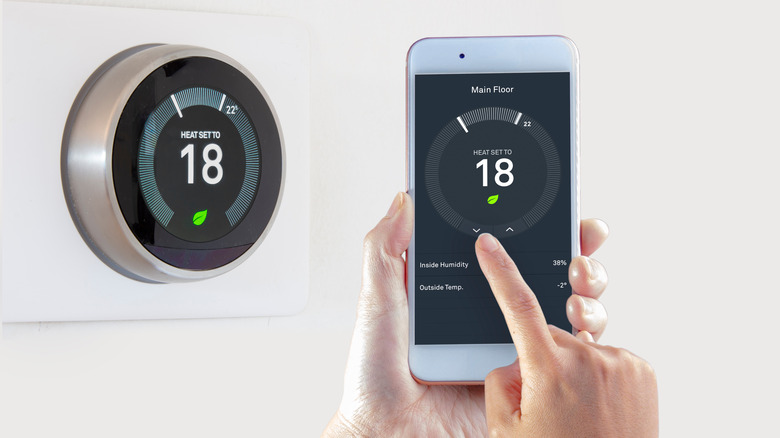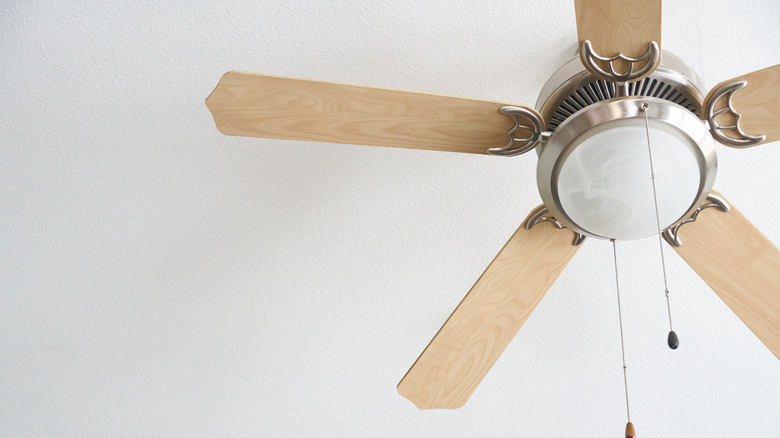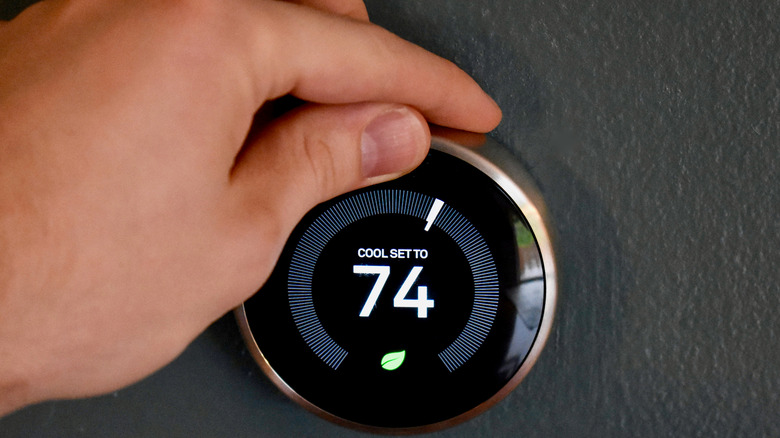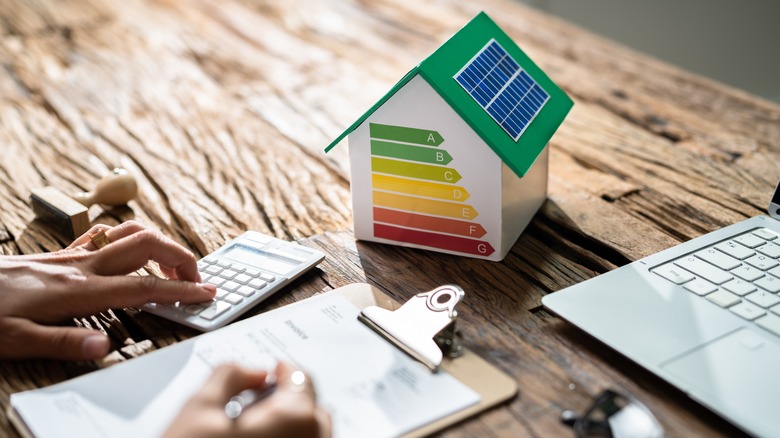How To Set Your Thermostat To Save Money This Summer
Summer is here, and the heat is in full swing. Many places in the U.S. have seen record highs even though the hottest months have yet to arrive. However, scorching temperatures are not the only source of discomfort for homeowners and renters this summer. Energy bills are soaring, with many people looking for ways to bring them down.
According to the U.S. Energy Information Administration (EIA), electricity bills are typically at their peak in summer. This year, they are set to rise even further — as high as 45% higher in some states — because of inflation, high gas prices, and other factors. There are ways to lower your energy usage, however. You can turn off lights, switch to LED bulbs, and adjust your thermostat — which is probably the most effective way to reduce energy consumption. Here are a few ways how you can use your thermostat to curb your utility bill in the summer months.
It pays to increase the temperature
During the summer, your first instinct might be to turn the temperature dial down when you feel overheated. But, according to the US Department of Energy, you may want to refrain from doing that. To save energy, they advise you raise your thermostat settings 7 to 10 degrees warmer when you're not home. If you do this for eight hours a day, you can save up to 10% on your energy bill. This can work out to $83 a year for the average homeowner. Also, when you're at home, don't turn down the temperature when you start to feel hot and prickly. You should always maintain settings around 78℉ if you want to save more energy. If you find temperatures too warm for your liking, you can use ceiling fans. They help circulate air, so you won't need to rely solely on air conditioning to stay cool.
Replace your regular thermostat with a smart one
Smart thermostats are one of the best moves to cut energy usage in your home. These programmable thermostats will automatically adjust temperature settings in your home based on the information given. Thermostats like the Nest Learning Thermostat can study your routine and make a cooling and heating schedule for you. The best part is that they are automated and can run by themselves. If you need to change the temperature settings manually, you can control them with the app, or with voice assistants like Google Home or Alexa.
Savings can vary depending on several factors including climate, personal temperature preference, home size, and the thermostat brand. Energy Star says you can save 8% on heating and cooling bills or $50 a year when you use its smart thermostat. Google Nest claims that its device can take up to 15% off your bill.
There are other factors to consider
There are other things too that might affect how much energy your thermostat conserves. For example, the Department of Energy says that where you install your thermostat can determine air circulation. According to its experts, the best place to put a thermostat is on an interior wall, far from doorways, skylights, or windows. Avoid direct sunlight as it can cause the thermostat to show temperatures as warmer or colder than they actually are.
You can also perform an energy audit or home energy assessment to see how energy is used in your home. With an energy audit, you're can learn the condition of your central air systems and ensure your home is sealed properly. You can hire a professional assessor to do the job, or you can do it on your own by walking through your home and doing a basic DIY assessment.



